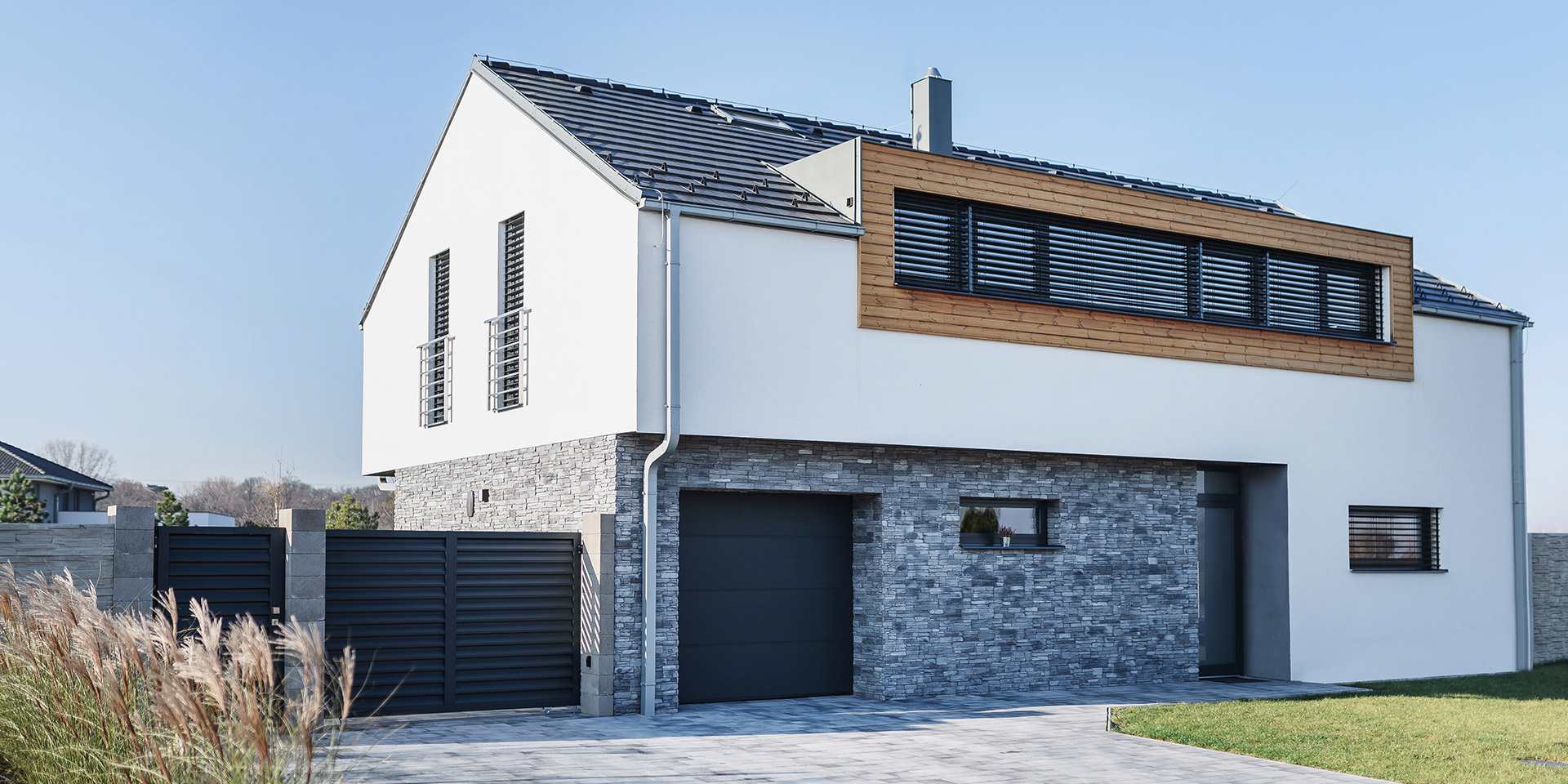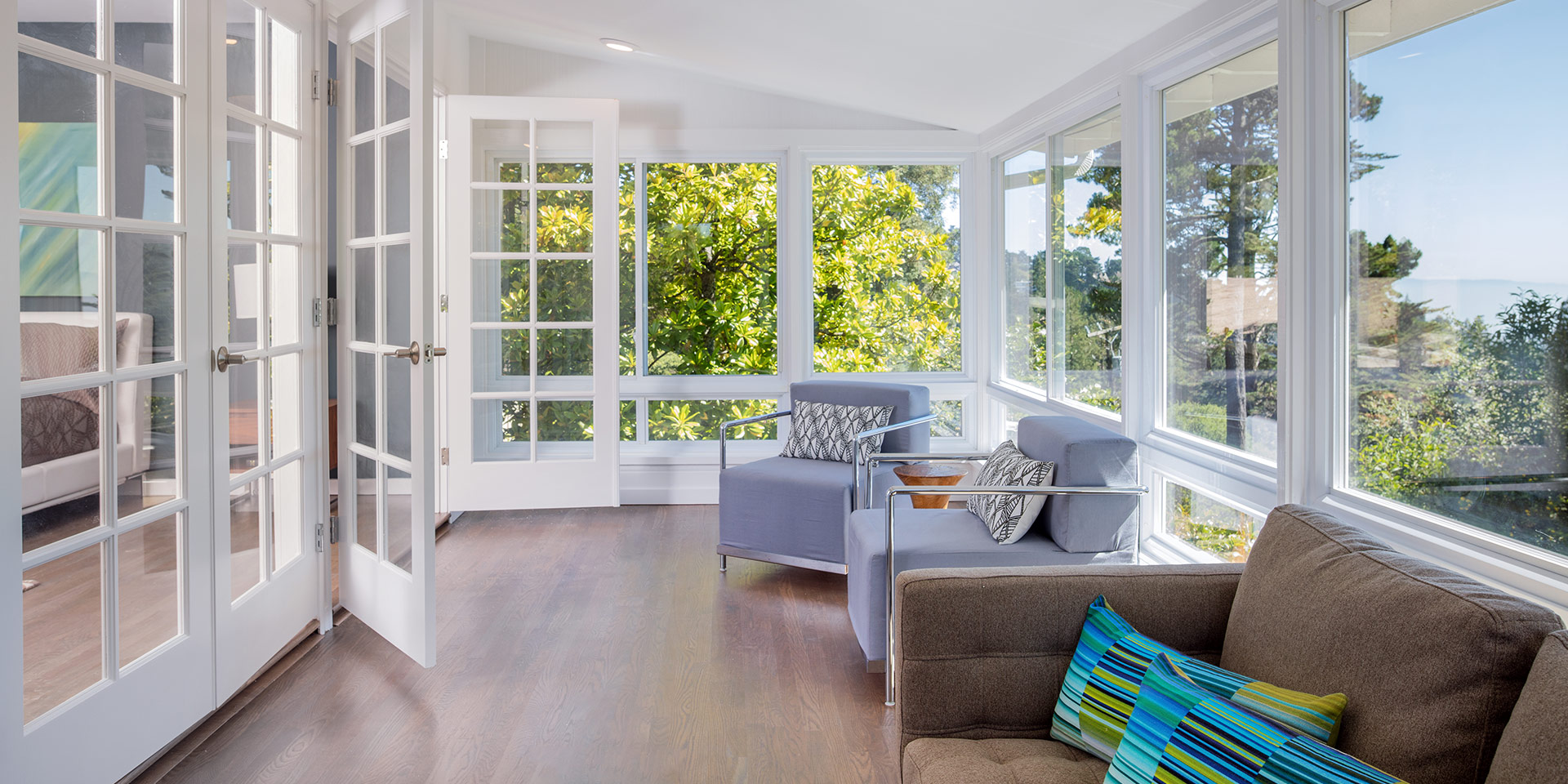Motors of external blinds: what types are there and how to choose them correctly?
Motorised blinds can be conveniently controlled using a button on the wall, a remote control or a mobile app, and some can be easily connected to a smart home system. That’s why over 90% of our customers choose this method of control. But which motor is best for you?

The choice of motor depends on whether you actually want to control the blinds:
- by a button on the wall – wired control
- by remote control or wireless button on the wall – wireless control
- by remote control or mobile app with the possibility of connecting to a smart home — intelligent wireless control with feedback
You should think about the choice of controls already at the design stage of the construction or reconstruction project. It depends on how many cable bushings you need for the window or whether and where you need to count on wall-mounted controls in the interior.
Wire-operated motors
Wire-operated motors can be used if you decide to use the classic control via buttons on the wall. Commands to pull up or tilt the blades are transferred from the control panel to the motor via a cable.
“These solutions are only rarely found in private and residential buildings, They are more suitable for commercial, buildings whose owners appreciate zone-based control. For example, they can control the blinds on an entire floor with one button,” says Global Account Manager Lukáš Borovský from Somfy, a company that manufactures blind motors.
For this type of control, think in advance about the locations for the control panels. If you forget about this in your project, they can be installed retrospectively, but it will cost you in the form of having to hack into your walls in order to install wires or drill new holes.
Advantages of wire-operated motors
- They allow zone control.
- They are the cheapest of all motor types.
Disadvantages of wired motors
- They do not have advanced features, such as providing feedback on whether or not the command was executed.
- The control is not as convenient, you have to walk over to the control panels.
Wirelessly controlled motors
Wirelessly controlled motors offer a more advanced control method.
These are controlled by remote control commands, an app on your phone or buttons on the wall. The buttons are also battery-powered, so you can install them retrospectively without interfering with the plaster. You can of course control multiple drives at once with one remote control.

Another advantage of wireless motors is that they can work in conjunction with wind and sun sensors. If you purchase them, then the blinds will, for example, be able to drop down and darken automatically when the sun is bright, or pull up when the wind is strong.
“I recommend that you connect your electric motors to sensors that will protect the external blinds from strong wind or hailstorms. For example, if a wind sensor detects that a strong wind is blowing, it will pull up the blinds to the safety of the cover sheet or the under-plaster box,” explains Jan Gajdoš, the product manager of NEVA.
You can also set the blinds to automatically increase or decrease darkness in the room at specific times.
Advantages of wireless motors
- Convenient control from anywhere in the house using the remote control,
- Connectivity to the smart home including Alexa, Siri and Google Assistant voice assistants
- interfacing with sensors that monitor the weather
- and automatic retracting, extending and tilting according to sunlight or time of day.
Disadvantages of wireless motors: higher cost compared to wired motors
Intelligent wireless motors with feedback
In addition to what wirelessly controlled motors can do, intelligent motors actively communicate with you. Benefits include an automatic mode in which the motors react to outdoor conditions such as sun and wind. In addition, smart wireless motors are even better at protecting external blinds and themselves.
In winter, for example, it can rain and then freeze. If you have the blinds down at that moment, they will stick to the parapet or terrace. Intelligent motors recognise this and do not risk damaging the blinds or the motor itself by trying to pull the blinds up.
Similarly, the motors will protect the blinds in the event that, for example, a patio chair, a forgotten broom or a plant pot is knocked over by the wind and ends up against the blinds. A conventional motor would exert more force and pull the obstacle up with the blinds. But in doing so, it could damage the slats. Intelligent motors with feedback detect the obstacle, move the blinds back a few centimetres and inform you that an object seems to have got caught in the blinds and needs to be removed.
Smart wireless motors offer you:
- Convenient control of blinds from anywhere in the house,
- Connectivity to the smart home including Alexa, Siri and Google Assistant voice assistants
- protection of the blinds and themselves from damage by mechanical obstructions,
- connection to sensors that monitor the weather and protect the blinds from weather damage,
- automatic retraction, extension and tilt according to sunlight
- and setting of automatic scenarios.
Despite the most advanced technology they contain, smart blind actuators are the same price as cordless motors.

Technical parameters of motors
Your blinds supplier will always advise you on the specific type of motor, but in general, the motor power must be appropriate
- to the dimensions of the blinds,
- weight of the blinds,
- and strength of the guiding tape and ladder.
The speed at which the blinds move is determined mainly by the shaft diameter and the motor speed. Blind motors run at 24 revolutions per minute.
Torque is another important criterion for motors. For blind motors, the torque is 6, 10 or 18 Nm and the higher the torque, the higher the electricity consumption.
“The highest energy consumption occurs when the blinds are starting to move. Therefore, in the design, account for the run-in with sufficient circuit breaker capacity or divide the power lines to the motors into several separate branches. I recommend connecting optimally 5, but no more than 8 motors with the highest torque per branch to a 16 A circuit breaker,” suggests Jan Hrnčíř.
It is also good to know that even the largest blind with a surface area of 20 m2 can be driven by one motor. If you are planning motors with blinds contact our partners, who will advise you on the choice. And if you’d like a smart home, our partner Somfy has a showroom where you can try out smart control yourself.



